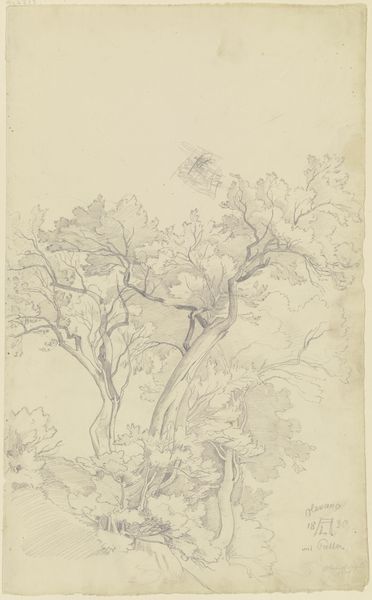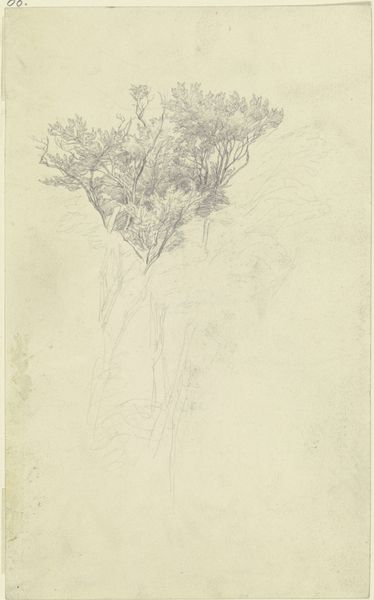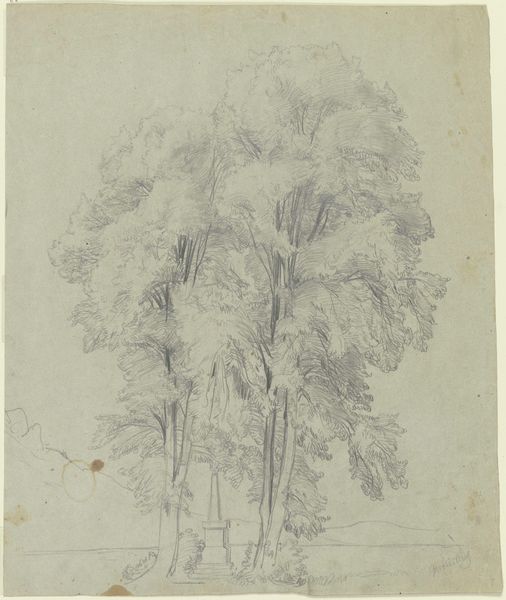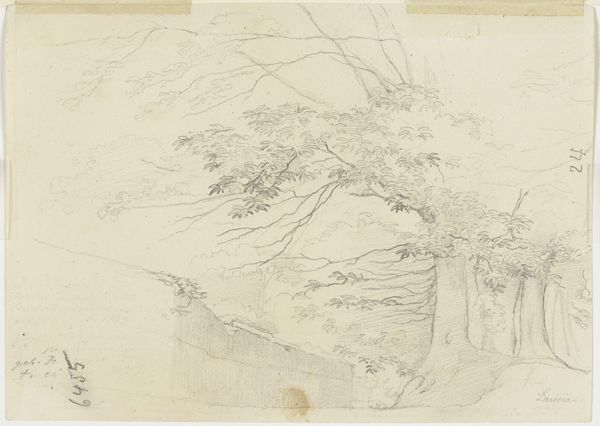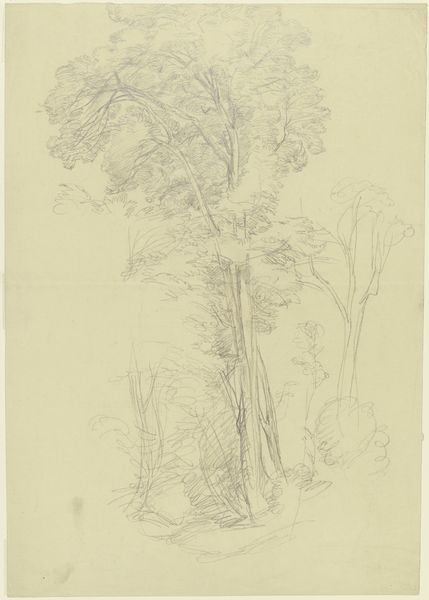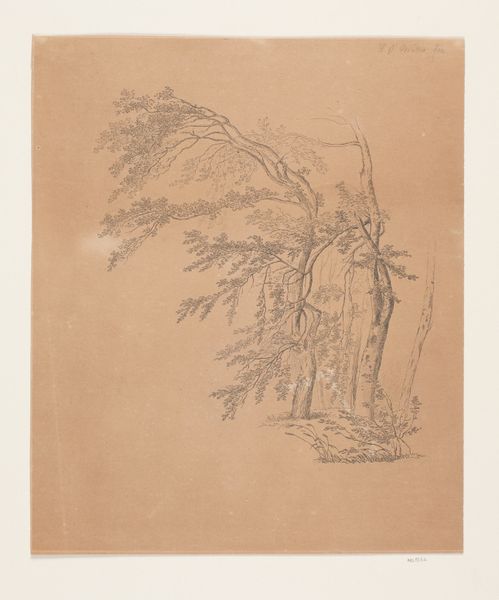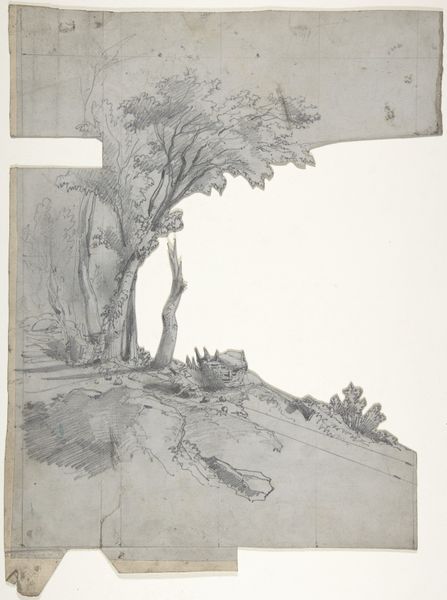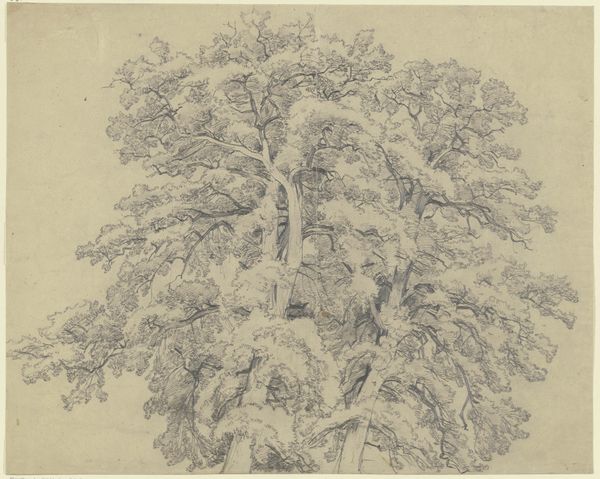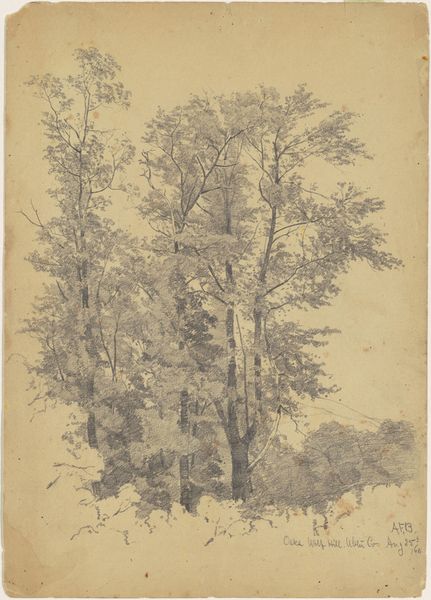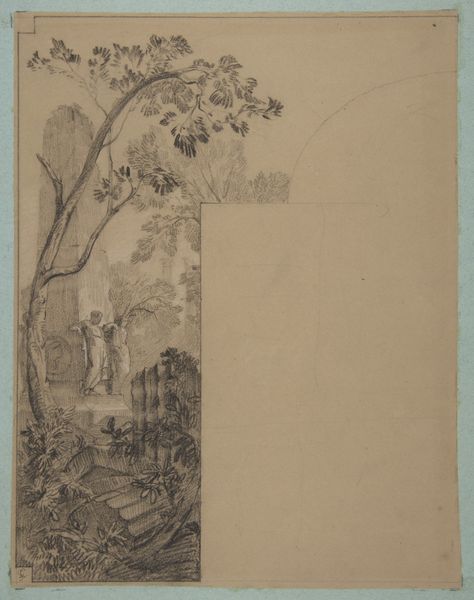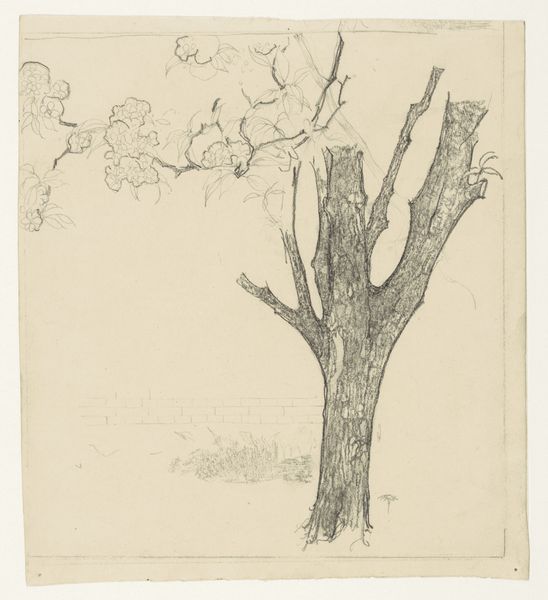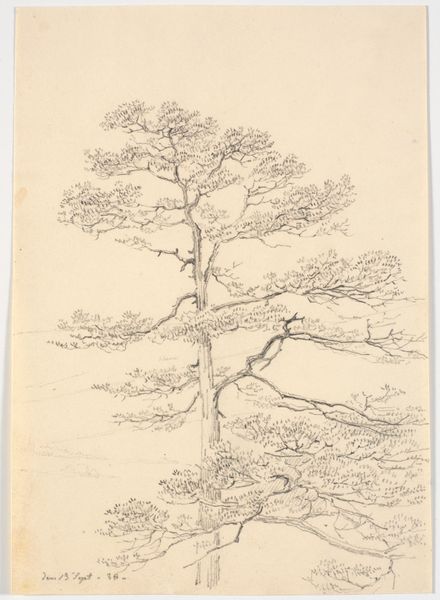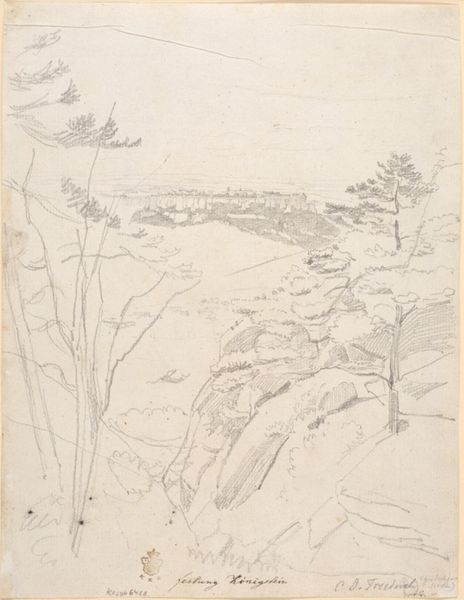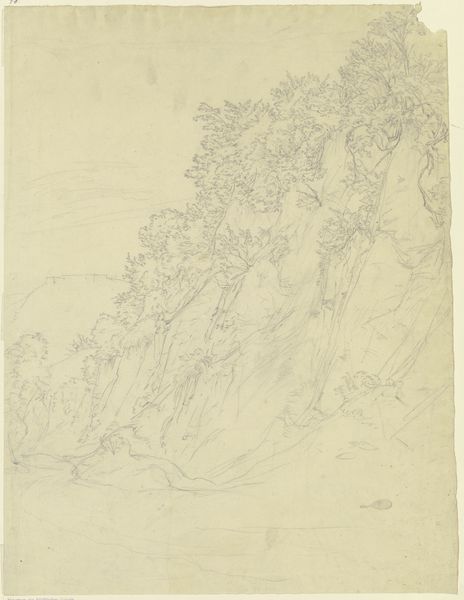
Design for a Stage Set at the Opéra, Paris 1830 - 1890
0:00
0:00
drawing, pencil
#
drawing
#
landscape
#
pencil
#
academic-art
Dimensions: Irregular sheet: 10 9/16 x 5 11/16 in. (26.8 x 14.4 cm)
Copyright: Public Domain
Curator: This preliminary sketch by Eugène Cicéri, "Design for a Stage Set at the Opéra, Paris", created sometime between 1830 and 1890 using pencil, offers a behind-the-scenes glimpse into theatrical design of the era. What’s your first impression of this stage set? Editor: The immediate feeling is one of tranquil isolation. There's a gentle rise leading towards a cluster of stylized trees against what might be imagined as a softly lit backdrop, all conveyed in delicate graphite. The symbols of the forest hold the stage alone. Curator: That tranquility might reflect more broadly a nostalgic or even idealized depiction of nature characteristic of academic art at the time, perhaps divorced from the rapid industrialization taking place in Paris. Who has access to this tranquility becomes a crucial question. This sketch then is not merely a stage set design, but an articulation of social values embedded in cultural institutions like the Opéra. Editor: Yes, the symbols are deployed consciously. I notice how those slender trees rise assertively skyward—almost like visual prayers, which speaks to something fundamental. How does Cicéri use the symbols of nature to evoke status and desire within the theatrical spectacle? It appears this scene wants to recall some idealized past that speaks to longing. Curator: Absolutely. Think about the patrons of the Opéra, the bourgeoisie seeking escape and affirmation of their social standing. This "natural" scene isn’t just landscape, but landscape laden with meaning, signifying luxury, leisure, and power, reinforcing their world view. This performance would have shaped their understanding of class. Editor: The image also utilizes the grid marks visibly overlaying the artwork to make sure all parts of this image relate in the proper scale. Those lines are physical embodiments of balance which creates harmony. Curator: I think looking closely allows us to see the theater of power happening here. Art isn’t just representation. It shapes how people feel and think and therefore how systems are upheld. It goes deeper than the pleasure or aesthetic surface. Editor: Yes, a quick study yields greater rewards if we slow to contemplate all the latent symbolism operating beyond a beautiful initial effect. Curator: Precisely, and understanding this context enriches our appreciation beyond its formal qualities. Editor: This drawing offers rich avenues for further investigation, bridging aesthetics and meaning in surprisingly poignant ways.
Comments
No comments
Be the first to comment and join the conversation on the ultimate creative platform.
